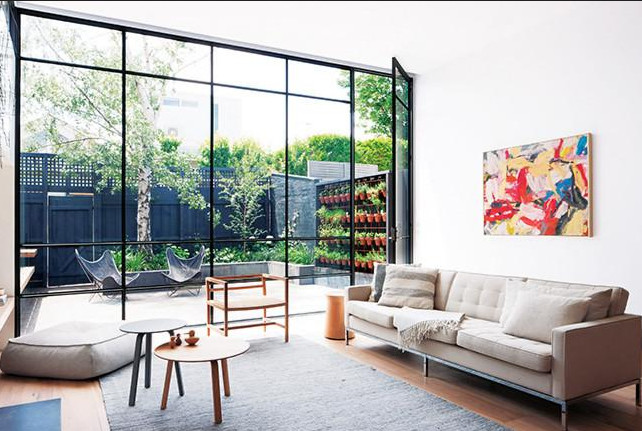Do Modern Steel Doors and Windows in Sydney Last Long?
Doors and windows made of steel have advanced from historic factory styles of the 19th century. Today, their qualities can surprise you and they are now durable, energy efficient and easy to maintain. Additionally, large glass, maximum day lighting and thin lines make them endure a lot of priority with designers and architects. However, many property owners have seen the historical ones succumb to rust and corrosion. Hence, these questions come up:
Will Modern Ones Stand the Test of Time?
Modern Steel Windows:
Historical models of these windows have now evolved to unify the wrought iron classic look with modern window technologies. Integrating classical craftsmanship with modern technologies creates products that are inherently timeless and strong while still being corrosion free, condensation resistant and energy efficient.
Advanced technologies being used to make windows such as thermal design, progressive finishing and efficient glazing are some of the latest qualities that have changed these windows to what they are today.
Progressive Finishing Options- Coating with Zinc offers Double Protection
A zinc layer is applied on these doors and windows to protect them against corrosion. This technology is referred to as galvanizing, whereby zinc buffers steel from oxidation that causes rust. Zinc also protects steel through:
Barrier Protection: It protects steel by acting as an effective seal against environmental corrosion by preventing moisture from corroding steel.
Cathodic Protection: It protects exposed areas of steel from being scratched. In case the surface is scratched, zinc forms a galvanic layer and protects steel from corroding.
Applying a coating of zinc can be done through different techniques such as spray metalizing, zinc rich paints and hot-dip galvanization.
Hot-Dip Galvanization to Make Thermally Broken Steel
Galvanizing using the hot-dip technique involves dipping steel into molten zinc such that a thick layer of zinc is formed on steel for extra protection. This process is very effective for it provides thickness of around 2 to 6 mils or 0.002 to 0.006 inches.
Experts argue that steel which is thermally broken shouldn’t be treated using this technique since extreme heat may cause warping and distortion of the insulation features. This problem is also a concern with solid steel due to uneven heating, leading to distortion and warping too. Always ensure that you go for a manufacturer who follows the set guidelines for safe galvanizing using the hot-dip technique.
Enhanced Protection with Metalizing Zinc Spray
This technique involves spraying zinc thermally on steel. In this method, an airstream of molten zinc is sprayed on abrasive steel surface. Particles of molten zinc are then flatted on the steel surface and they chemically stick on the surface, forming an even zinc coating to protect steel from corrosion.
This zinc spraying method, unlike the hot-dip technique, avoids too much heat input on steel such that warping and distortion are avoided. Hence, it does not damage steel that has been thermally broken. The spray metalizing technique also comes with extra protection to steel products since another zinc coating can be reapplied after final drilling, welding and machining are complete. In other galvanizing techniques, this extra step is often skipped, and this may lead to corrosion issues with time
This zinc spray technique has always been associated with giving steel a thick protection layer. The lifespan of the coating depends on the weight for every unit area.
For instance, heavier coating allows steel to be more corrosion resistant than it would in its raw state. For extremely corrosive climates or extended life, the coating may be applied beyond 0.02 inches. It is estimated that 0.01 inch of a zinc coating translates to 25 years of protection.
More so, the porosity that the spray creates acts as a layered foundation where seals and decorative patina sticks. The final zinc coating emphasizes all the unique qualities of steel and also extends the lifespan of the door or window by an extra 15 years.
Many Years of Protection
Although zinc metalizing is a new technology in this industry, it has been used successfully for decades in major infrastructure. For instance, the Saint Denis Canal lock gates and sluice in France were sprayed with zinc in 1930s and are still in their best condition till date, with only minor maintenance.
Another good example is the famous U.K Bridge, Menai Straits, whose suspension components and chains were sprayed with zinc before WWII and they were not repaired as the WWII went on. After the WWII war, the sprayed steel components were still in great condition whereas the painted sections were rusting.
Studies on the performance of structural coatings have also been done to establish the effectiveness of zinc coatings. For instance, the transportation department of New Jersey studied zinc coating on a bridge known as Thomas Mathis and found that after 8 years of exposure to marine conditions, zinc sprayed metalized coatings did not show any signs of deterioration while painted zinc coatings indicated varying performance.
More studies done by an American welding organization and the United States Navy shows that when metalized zinc coatings are applied properly in thickness of 6 mils or more, they offer two decades of corrosion resistance on steel bridges.
Zinc spray metallization has progressively outperformed other galvanizing techniques and the effectiveness of its protection is clear. Although this technique was initially used for infrastructure, it is now being widely used as a finishing process for steel doors and windows that are thermally broken. It is now a cutting-edge technology in this fenestration industry.
Modern Steel Windows- Designed to Last
Historical windows made of steel have always been associated with corrosion. However, modern ones come with the benefit of handcrafted patina finishing and spray metalizing to ensure they are corrosion free, extremely durable, and maintenance free.
